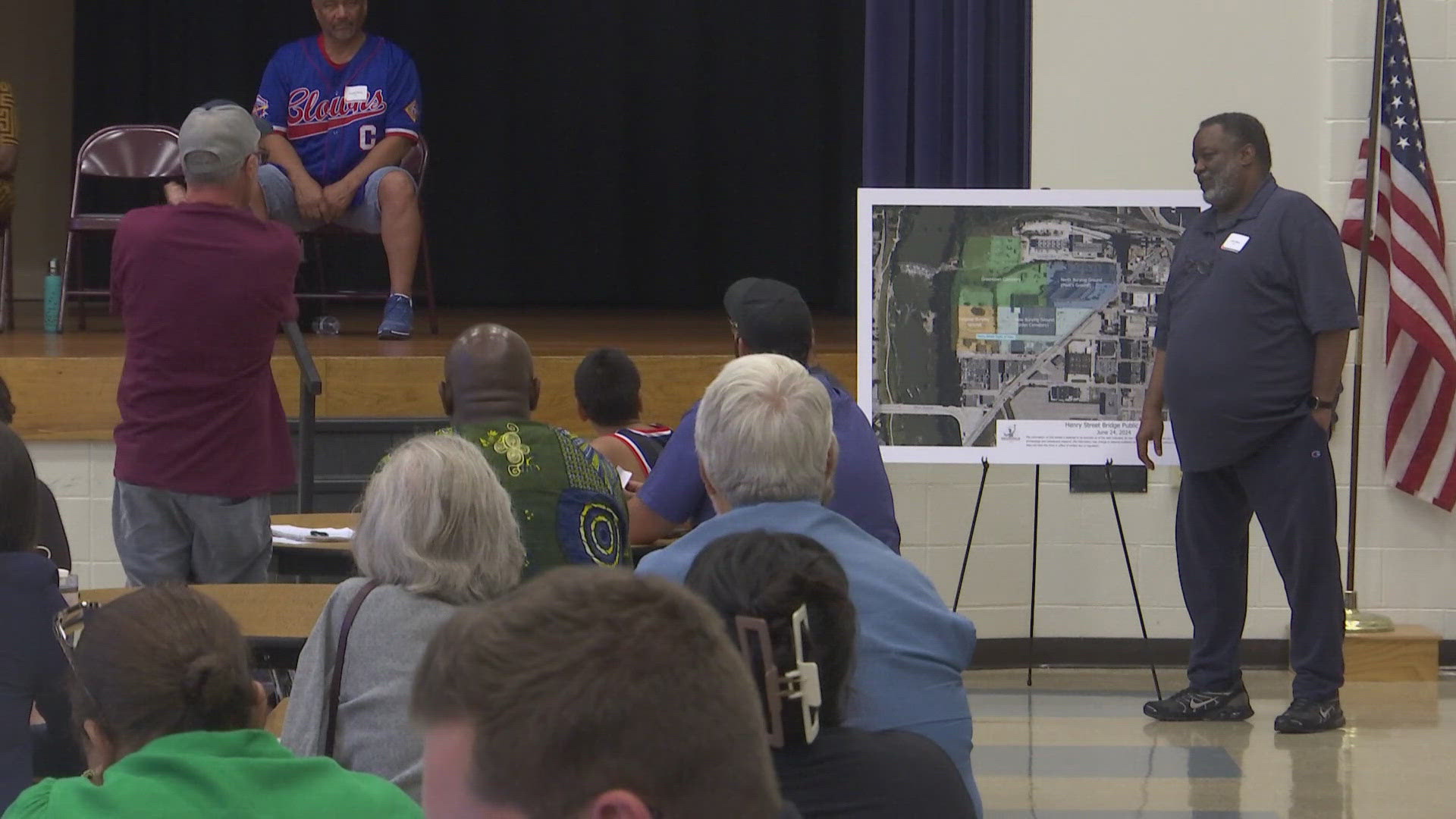INDIANAPOLIS — For more than a year, the Indianapolis Department of Public Works has been meeting and working to address the public's concerns about the construction of the Henry Street Bridge and the future of Greenlawn Cemetery.
DPW invited the public for feedback and gave updates at a meeting on Monday, June 24.
Community members were able to share some history of the cemetery, information that can also be uploaded to a newly-launched website.
"We believe this is the first time the city has taken this approach, and we are proud of that. It's been hard. It's been challenging and uncomfortable at times, but that means it's meaningful and that means it's important," DPW Director Brandon Herget said.
"I think the history of the African American community that was shared tonight was very informative," Edison School the Arts CEO Michelle Brittain-Watts said.
However, the big question on everyone's mind is what's going to happen to the remains. Jeannie Regan-Dinius, Crown Hill Foundation's director of historic preservation, said that's a hard question to answer.
"It's a complex issue and a complex project because of all the things that have happened to the cemetery over the decades. This is not going to be a simple fix. It's not something the city is going to do immediately tomorrow. But just know that they agreed to and committed to a transparent and archeology-led project," Regan-Dinius said.
RENDERINGS: Henry Street Bridge project
When completed in 2026, the Henry Street Bridge will focus as much on pedestrian traffic as vehicular traffic, bringing an expansion to the Cultural Trail. Brittain-Watts said it will be great for her students.
"I do think it will be accessible for this neighborhood to have a quicker access. I think the bridge will be key for so many events downtown. I think we are in a prime location, where we can walk," Brittain-Watts said.
People gathered at Monday's meeting said they think keeping neighbors involved in the project will strengthen the community.
"Doing it the right way will calm the nerves and the energy of the project," Brittain-Watts said.
"The city seems to want to do it right, and we are going to find out so much about our pioneers of Indianapolis and Indianapolis history, so it's kind of exciting for this new history to be popping up," Regan-Dinius said.
City leaders said they estimate 650 or more graves could be found during construction.











